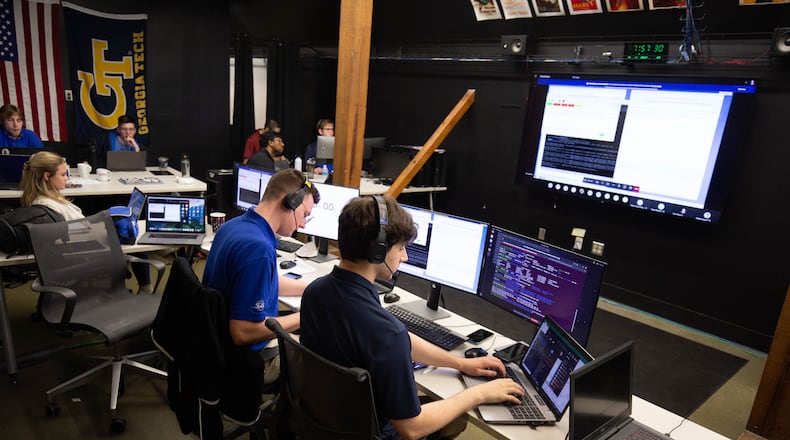Editor’s note: This story has been updated to include information about the rocket’s launch.
Georgia Tech students and researchers are playing a big role as mission control for an accompanying spacecraft after the launch of a SpaceX rocket.
The team from Georgia Tech is operating the Lunar Flashlight, a 30-pound spacecraft that soared into space with the Falcon 9 rocket when it launched at 2:38 am. Sunday.
“Lunar Flashlight made contact about an hour later (around 3:47 a.m.) after it was deployed. The satellite is healthy in space and on its way to the moon,” a Georgia Tech spokesman said in an email.
The launch from Kennedy Space Center in Florida had been previously postponed.
Credit: Contributed
Credit: Contributed
Georgia Tech team will run operations from their lab in Atlanta that will serve as mission control, according to a news release.
The mission, expected to take months, will be staffed by 14 graduate and undergraduate student operators.
”This is the culmination of everything we’ve worked for, and there’s a lot of stuff that could go wrong,” said Michael Hauge, lead operations systems engineer and a master’s degree student in aerospace engineering, in a video shared by Georgia Tech before the launch.
Lunar Flashlight is expected to reach the moon in late spring. The plan is for it to orbit the moon 10 times over two to three months and use lasers to seek out signs of ice in shadowy craters, according to Georgia Tech.
The spacecraft was developed by NASA’s Jet Propulsion Lab with other partners, including Georgia Tech.
About the Author
Keep Reading
The Latest
Featured




